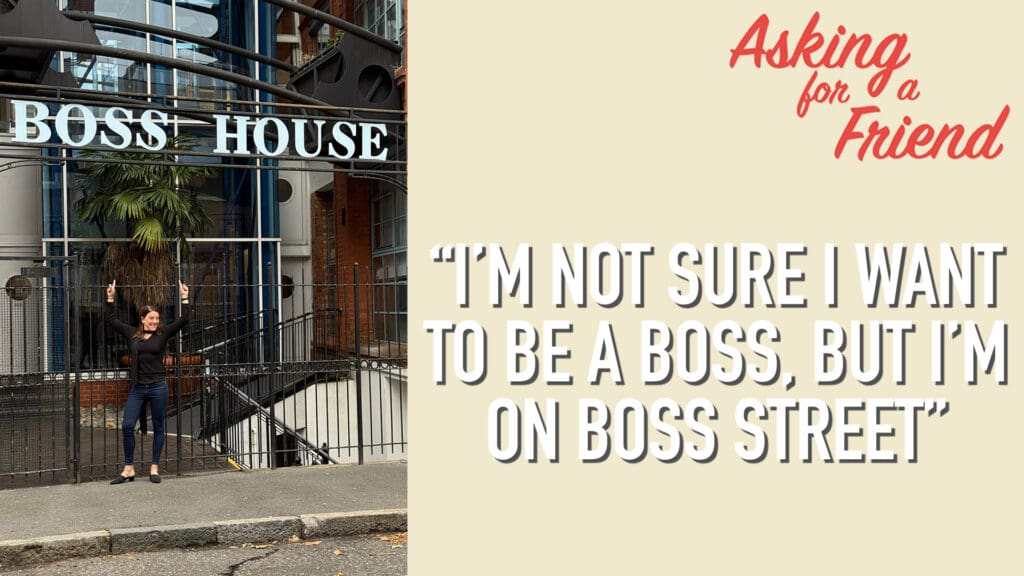Great leaders have great expectations. They expect excellence and hold people accountable. Unarticulated expectations frustrate … you … your boss, your team, your children, your lover.
“But I assumed you would .,.”
“Why should I have to spell that out?”
Unarticulated assumptions are a sign of ineffective leadership.
One good conversation about expectations prevents 14 “Why didn’t you?” conversations.
My MBA students made it perfectly clear. They wanted a “rubric” on how they’d be graded. It’s an intensive practice to clearly define my expectations upfront and check for understanding. Sure the real world is “messier,” but there’s something to be said for clearly defining what you are looking for on both sides of the relationship equation.
Clear understanding improves performance.
The Simplest Way to Set Clear Expectations
1. Get clear on your own expectations.
If you’re not clear on what you want, I guarantee you won’t be able to communicate it. I had one VP who could never articulate just what he wanted in the presentations we were creating. He just knew it when he saw “it.” The lack of clear expectations always resulted in rounds and rounds of frustrating iterations wasting everyone’s time and weakening respect along the way.
2. Engage in conversation.
Be clear about what you want, but also listen carefully to concerns. It’s better to identify expectation disconnects as early in the game as possible.
3. Write them down.
In some circumstances, it’s useful to write down agreed-to expectations. This works one-on-one and with teams. The process of writing down expectations often leads to further clarity and serves as an objective reminder as expectation violations arise (P.S. if you want some musical inspiration see my cousin’s awesome folk band singing Write It All Down.)
4. Check in.
From time to time it’s useful to check in. You can easily draw a 4-quadrant box to guide the conversation (click graphic below). You can do this as a one-on-one or a team exercise.
Step 1
Each person completes the matrix, jotting down areas where their expectations are being met and where they are not.
Step 2
Discuss areas of agreement and areas of concern
- What do you expect that you receive, or don’t expect and don’t receive? Start with appreciating that.
- What do you receive that you don’t expect, or expect that you don’t receive? Recognize the good or the issue here and discuss.
Step 3
Identify specific actions that would enable you to work more effectively together.
This exercise works well in interpersonal discussions, or also works well to talk about team dynamics.
See Also:









I co-create the expectations. The outcomes are mutually designed.
Steve, Whenever possible I agree, that’s the best approach. I also think it’s important for both sides of the relationship to discuss what’s working and what’s not. I envision this tool being completed by all involved in the expectation setting and experiencing.
Love the post, Karin and one I can relate to clearly!
Your graphic is terrific and I especially like the “appreciate” piece. I am consistently hearing the challenges of leaders feeling that they are not being heard. When we delve deeper we often see that their expectations were never clearly defined. Knowing what each person on the team is accountable for and the deadlines can be so helpful.
Thanks Karin!
Thanks, Terri. I’ve learned this one the hard way over the years. It’s easy to assume folks get what you’re saying… but if you’re a big picture thinker, much can get lost in translation.
Excellent post & visual Karin. Easy to understand, relate to & use.
Thanks so much, Joy!
This one really hit home for me, Karin!
I am very guilty of setting up great expectations and then not clearly communicating them with others. These two phrases: “But I assumed you would.” “Why should I have to spell that out?” have caused me more trouble than I care to admit…both personally and professionally.
The problem with smart leaders is that they assume everyone is on the same page as they are, and we are quick to turn pages and move on to other topics. Because it’s so clear and obvious to us, we fail to stop and make sure everyone else feels or thinks the same way.
You offer excellent suggestions, and I usually try to stop and say, “Now, what did you just hear me say?” to make sure everyone is tracking!
LaRae, I’ve found this so tricky over the years. It’s so easy to think we were “perfectly clear.” It’s a challenge at home too. 😉
Awesome, Karin! Using Tom Gilbert’s Behavior Engineering Model, where the first of six boxes is “expectations & feedback,” I have surveyed hundreds of people from various industries about “what is my biggest obstacle to performance?”
Consistently, the number one obstacle is a lack of clear expectations & feedback.
Paul, Thanks so very much! I look forward to looking into that model.
If you don’t know someone’s expectations, you can never meet them! (Even your own). Great process that will help many, Karin!
Alli, Oh, yeah. It’s the worst when it’s our own.
Great post. The effective management of expectations is such an important point to raise as it can become very costly when expectations are not met. For example within executive recruitment, whatever the candidate’s motivation might be the cost of unsuitable hires is quite substantial not to mention damaging for the executive in question.
Bob, Thanks so much for weighing in. You provide such an important example. Hiring is a such an important place to be talking about expectations.